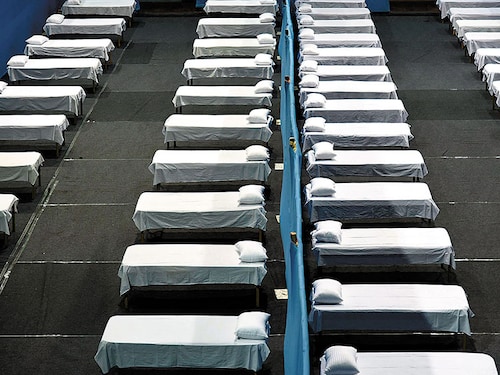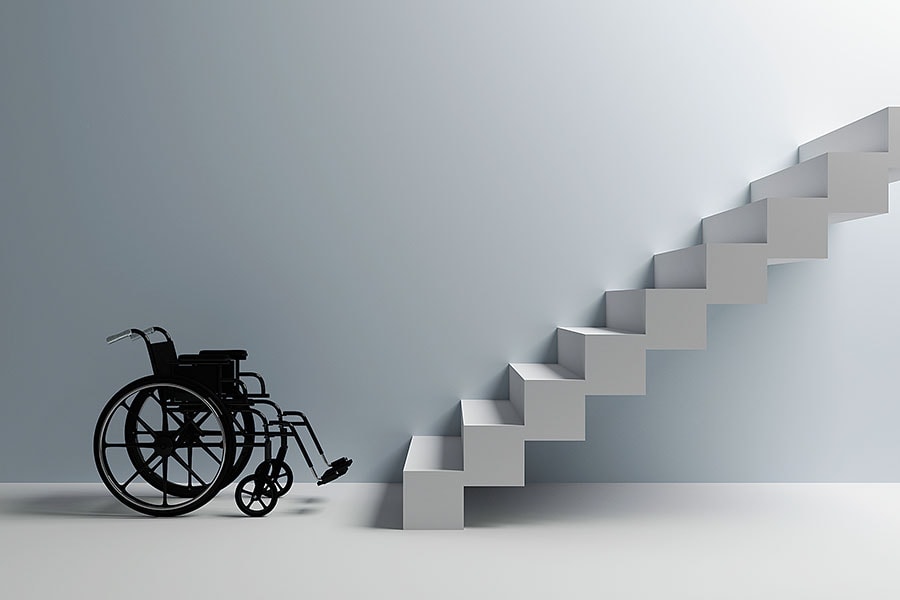The freedom to access health care
The Covid-19 pandemic has exposed the deep social and economic divisions that make access to affordable and quality health care a distant reality


 Image: Shutterstock[br] “Freeing yourself was one thing, claiming ownership of that freed self was another.”- Toni Morrison
Image: Shutterstock[br] “Freeing yourself was one thing, claiming ownership of that freed self was another.”- Toni Morrison
On this 73rd anniversary of India’s victory in its struggle for freedom, we are in the midst of another struggle, and one that has confined us to our homes. The global pandemic has put more than half of the world’s population under lockdowns and an extremely modified way of life. In this situation, a question arises: How liberated is India’s health care system?
Our methods in this battle against Covid-19, via lockdowns and physical distancing, have been accompanied by a social and economic cost. With 81 percent of the working population involved in the informal economy, the pandemic has also resulted in a massive reverse migration from urban to rural areas. This inward migration has created a severe burden on existing health systems in rural areas, as the majority of outpatient departments (OPDs) in primary health centres have been inoperative since the commencement of the lockdowns.
Lack of access, which has been one of the core problems of the Indian health care system, now came with the inability to travel to district or private hospitals. The wider mortality of Covid-19 has gone beyond the pandemic itself. According to the World Health Organization (WHO), patients with pre-existing non-communicable disease (NCD) conditions such as hypertension and diabetes become more vulnerable, and have an increased risk of mortality not only because they are more susceptible to the virus but also due to the limited medical resources that now have to be directed towards treatment of patients with Covid-19.
Not just outpatient treatments, but in-patient treatments for communicable diseases as well as the implementation of maternal and childcare initiatives have witnessed a decline since the lockdowns. I, myself, have witnessed how, despite the privilege and access to the right networks, it has been difficult for a family member suffering from Covid-19 to get hospitalised, due to overcrowded wards. This came as no surprise where under one percent of hospital beds in India are available. At the same moment, a few metres away from my home in Gurgaon, there was a sea of migrants taking every possible mode of transport back home—from water tankers to autorickshaws, and some even on foot.
For many of us comfortably working from our homes, we can take a moment to acknowledge our privilege and see how the existing inequality across demographics, gender and income decimate survival probabilities of the majority of Indians.
Deepened social divisions
Though yet to explicitly become a right in itself, the Constitution of India incorporates provisions guaranteeing every citizen’s right to the highest attainable standard of physical and mental health through the extended interpretation of Article 21. What can freedom to health mean for us today? Every Indian should have quality health care at a distance they can travel, at a price they can afford, and with the dignity they deserve. Addressing these fundamentals of freedom opens a Pandora’s box during the current times, when deepened social chasms can no longer be ignored.
The previous undesirable outcomes from global pandemics such as Sars, H1N1, Ebola and Zika strongly highlighted the lack of strong health care systems, and the inequalities in health care delivery. Rural health care in India faces many problems, including limited accessibility, lack of affordability, and unavailability of doctors and frontline health workers. Therefore, one can anticipate the extent of lack of access when we see the urban-to-rural doctor density ratio being 3.8:1. Further, data collected by National Sample Survey Office (NSSO) in 2010 found that 86 percent of all trips taken for medical purposes were made by rural Indians.
Added to this are the woes of marginalised communities including women, children, and the tribal populations who this virus has forced into a position of standpoint. Being primary caregivers at home and not having access to their own health care is a sad irony for women’s health initiatives. in India. Ayushman Bharat-PMJAY addresses access and affordability through health insurance, and it is enabling many marginalised communities through testing and treatment facilities. But with an excessive focus on secondary and tertiary care, the initiative will remain futile if the entire population ends up in hospitals, as we are witnessing today. Image: Shutterstock[br]Domino effects
Image: Shutterstock[br]Domino effects
The greatest paradox of the pandemic is the non-Covid-19 related morbidities induced by the existence of Covid-19. According to data from National Health Mission, funds for research into vaccines for measles, mumps and rubella have fallen by more than 60 percent, and in-patient treatment for most NCDs, including heart and oncology, is down by over 70 percent. A recently published report from the Alliance for Malaria Prevention states that most aid organisations are struggling to continue operations because of the Covid-19 burdens on the supply chain. The Global Fund to Fight AIDS, Tuberculosis and Malaria states that 10 percent of the orders of HIV, TB, and malaria medicines face delays of over 30 days, which the potential malaria outbreaks in monsoon in India cannot afford. These studies show that the pandemic is developing inter-sectoral harmful impacts even within health care.
Almost all suspected cases of coronavirus are referred to government hospitals and tertiary care centres. For testing, isolation and management, tertiary centres have become the go-to point, thereby not only increasing their burden but also disrupting social distancing, and risking community spread due to travel and transit requirements.
Lessons from Lombardi in Italy show that as the number of infected people increases exponentially, hospitals also become hotspots of infections. Lack of foolproof methods of segregation and centralised HVAC systems add to existing risks. To prevent contact-spread and reduce the risk of infections we need to move away from a hospital-based approach, and this makes it imperative that India has a primary health-oriented approach to handling Covid-19.
The health and wellness centre aspect of Ayushman Bharat was supposed to expand the supply of health systems at the primary level. As India is one of the largest ecosystems of technology and digital innovations, the power of more than 4,000 health care innovations can be harnessed to enable solutions in the current state of restricted access. As a health care startup that has been reimagining rural ecosystems through a hub-and-spoke telemedicine system, our efforts at Gramin Health Care (GHC) on mainstreaming and integrating these solutions with public health systems in Maharashtra and Haryana have been impactful in these tumultuous times.
Reclaiming dignity
The notion of human dignity lies at the root of equality and freedom from discrimination in the implementation of human rights. In his recent call to action to put human rights at the heart of the Covid-19 pandemic, UN Secretary-General António Guterres underlined three rights at the centre of this pandemic—the right to life, to health care, and to freedom of movement—while keeping humanity and dignity at its core.
From India’s experiences with HIV-AIDS and TB, we have seen that stigma has a direct correlation with early testing. There has been a negative connotation underpinned to testing, and this has led to people not getting tested due to a fear of the results. In the case of Covid-19, there have been numerous incidents where educated and aware citizens, fearing the results, have refrained from tests and following quarantine measures. Due to the multiplier effect of the virus this has had a detrimental effect, leading to an exponentially increased transmission. Stigmatisation has also affected vulnerable communities. Adding to the dynamics of caste-led regressive practices, discrimination has also taken the form of calling out the other. Solidarity and awareness should be the guiding light in countering these stigmas.
The light ahead
American historian Frank Snowden’s analysis of pandemics across the centuries serves as a tool for today’s societies to reflect the moral, social, economic, political, and environmental relations that we have created. Building on the Indian Supreme Court’s interpretation of Article 21—the realisation of the right to health as part of the fundamental right to life—the freedom to access health care is a Constitutional Right. Hence, universal health coverage (UHC) is vital to our existence as a free and independent nation.
UHC does not mean free health care, but reducing out-of-pocket expenses that restrict citizens’ access and affordability of health services. The frameworks of inequality built in out-of-pocket expenses continue to play out across demographic, urban-rural, income, and gender divides. Reports on increased out-of-pocket expenses from March in both urban and rural areas attribute access to medicines as the single largest cause. Through Ayushman Bharat-PMJAY the government has made efforts to optimise the cost of Covid-19 medicines. But as the world’s largest democracy with the most diverse population, we can no longer appoint the government as the only stakeholder in this journey towards UHC.
The private sector, entrepreneurs and communities must be stakeholders to aid the government reach difficult-to-access areas through cost-effective and disruptive strategies. We, at GHC, are using our service delivery platform in partnership with various state governments and pharmaceutical companies to ensure availability of affordable, quality medicines. In our five years of creating an ecosystem at the community level, GHC has enabled more than 100 assisted telemedicine centres that are proving to be a key point of contact in Covid-19 management.
Rigorous implementation of community-led initiatives has been a weekly modus operandi for GHC since 2015. We have been holding more than 15,000 camps annually with our community and public sector partners in villages, thereby reducing the need for older patients to travel to distant hospitals. In these Covid-19 times, we continue digital consultation for more than half a million people, and partner with MyGov.in to spread awareness in village households. These methods of outreach can help frontline health workers identify, isolate and manage infections, including contact-tracing at a primary level.
Much like Snowden’s prophecy, Covid-19 should be a wake-up call in working towards the existing socio-economic inequalities that are still burdening our country. It is indeed time for us as individuals and organisations to step up and be accountable stakeholders in ensuring that no one is left behind. May this Independence Day truly chart the path towards universal health coverage and may each citizen have the choice and dignity to access this Constitutional Right.
â— The author is the founder of Gramin Health Care
First Published: Aug 11, 2020, 12:14
Subscribe Now